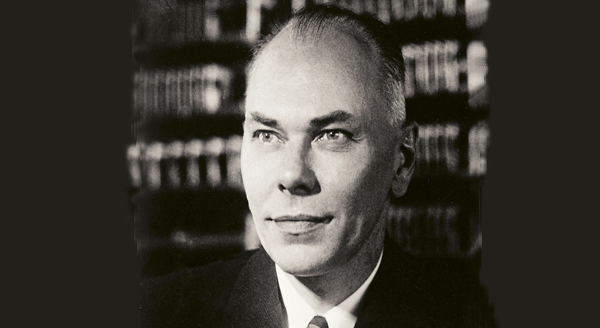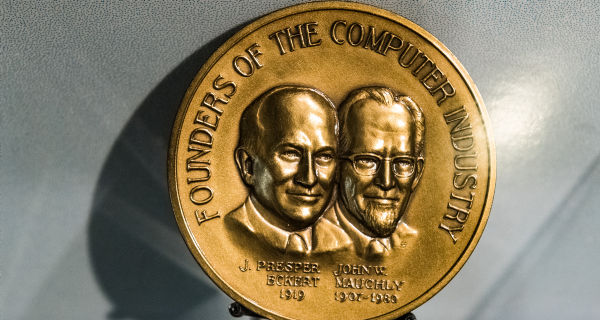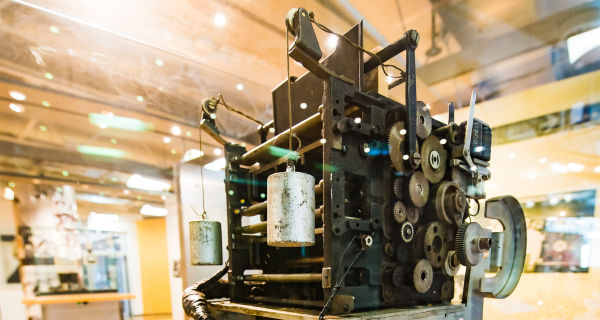These three American computer pioneers symbolize the dawn of the Computer Age. Their machines were the first automatic calculators that captured the imagination of the general public.
Aiken's Mark I
Howard H. Aiken was an electrical engineer. After a decade in this field, he went to Harvard University to obtain his Ph.D. in physics. The time-consuming calculations for his doctoral dissertation led him to the idea of a digital programcontrolled automatic calculator.
Aiken's machine, whose general design had been devised in 1937, was engineered and built by IBM from 1939 and completed in 1943. This Automatic Sequence Controlled Calculator (ASCC), also called Harvard Mark I, used standard IBM parts as much as possible and was therefore electro-mechanical. It was 51 ft. long (15.54 m), 8 ft. high (2.44 m) and weighed 5 tons.
The very first generation of programmers grew up on this machine that ran continuously in 1944-45 to solve wartime equations concerning, for example, the protection of ships from magnetic mines, radar problems and a set of calculations for implosions - programmers learned only later that these last calculations had been for the detonator of the atomic bomb. Aiken designed three more giant calculators (Mark II, III and IV) but his lasting contribution to the Computer Age was his pioneering computer applications to data processing such as billing and his development of university teaching programs in what we now call computer science.
Eckert and Mauchly: Developers of the ENIAC and UNIVAC I
John W. Mauchly and J. Presper Eckert developed the ENIAC, the world's first electronic large-scale general-purpose digital automatic calculator, at the University of Pennsylvania. It was fully operational in 1946. The two inventors were convinced that computers could bring benefits beyond the area of scientific and military applications. They set up their own business to develop the UNIVAC (Universal Automatic Computer). Due to financial difficulties, Mauchly and Eckert had to sell their company to Remington Rand in 1950 but remained in charge of the development of UNIVAC. On presidential election night in 1952, UNIVAC, on the basis of only 3,398,745 votes in, predicted a landslide victory for Eisenhower - in complete contrast to opinion polls that had predicted a close race. But UNIVAC was right! After this election night on television, UNIVAC rapidly became the generic name of a computer in the USA.


